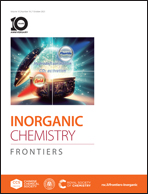Enhanced performance of perovskite solar cells via a bilateral electron-donating passivator as a molecule bridge†
Abstract
Defects at the buried interface are the primary factors contributing to recombination losses and instability in perovskite solar cells (PSCs) with n–i–p structure. Here, a molecule with bilateral electron-donating groups, 6-amino-1-hexanol (HAL), is introduced between SnO2 and perovskite (PVK) to optimize the characteristics of the buried interfacial properties, as well as the PVK film quality. The surface defects of SnO2 can be more effectively passivated, and its energy level structure can be tuned more appropriately. Meanwhile, the electron-donating groups in HAL can passivate the Pb2+ defects and stabilize the [PbI6]4− octahedra at the buried interface. With the assistance of bilateral electron-donating groups, HAL can act as a molecular bridge to easily bridge SnO2 and PVK to passivate the buried interfacial defects, thus enhancing device performance. As a result, the photovoltaic performance was significantly improved by the buried modification with HAL, ultimately achieving a champion PCE of 23.58%, far superior to the inferior PCE of 21.30% of the pristine device. Furthermore, after 35 days of storage at approximately 35% relative humidity (RH) and room temperature, the device based on HAL-modified SnO2 demonstrates significantly better stability than the pristine device, as it still maintains over 90% of the initial efficiency. This study provides an effective molecular bridge strategy for further enhancing the performance of PSCs.

- This article is part of the themed collection: FOCUS: Perovskite Materials and Devices


 Please wait while we load your content...
Please wait while we load your content...